By Steve Living/DWR
Photos by Steve Living/DWR
Shrubs have been on my mind lately… perhaps the result of watching too much Monty Python in my youth. More so because the importance of this part of the habitat puzzle has been obvious over the last couple of weeks around my house.
I have some mature native trees, including oaks, pine, black cherry and American holly. These are important and provide food for many native insects (which are the main food for baby birds!). I’ve been removing invasive shrubs like privet, nandina, and white mulberry and planting native species like wax myrtle, silky dogwood and arrowwood viburnum. I’m also letting other native species like winged sumac and devils walking stick establish on their own.
There are also some exotic species that are not invasive that I’m keeping around because they add some color and are large enough to provide important habitat benefits for wildlife while I wait for my native shrubs to get big enough to add habitat structure.
Just how important are shrubs and small trees to nesting birds? Let’s take a look at who’s been nesting on my little half-acre. We often think about nest boxes to help breeding birds. Well-designed and placed boxes can be a great resource in your yard, but are only used by a relatively small number of species.
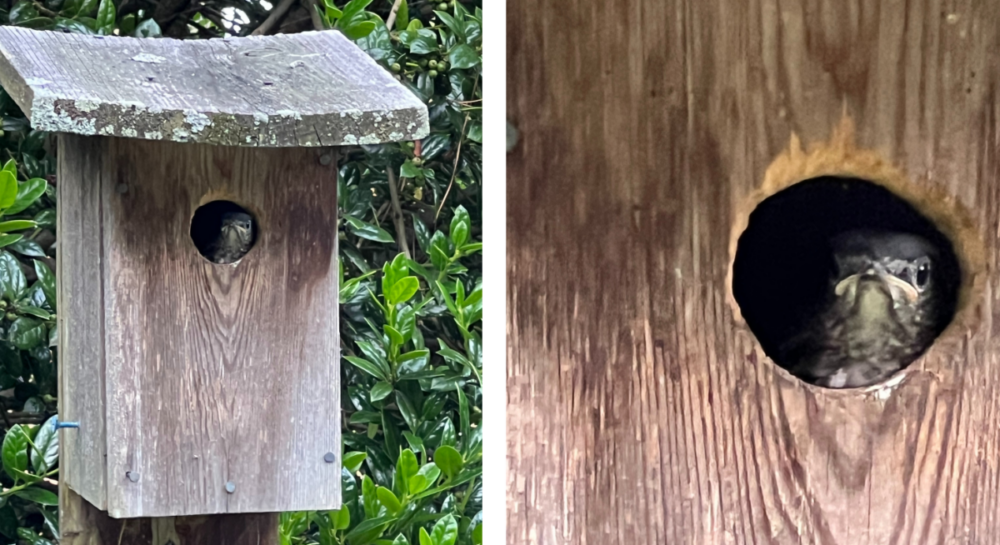
These eastern bluebirds fledged the day after this picture was taken.
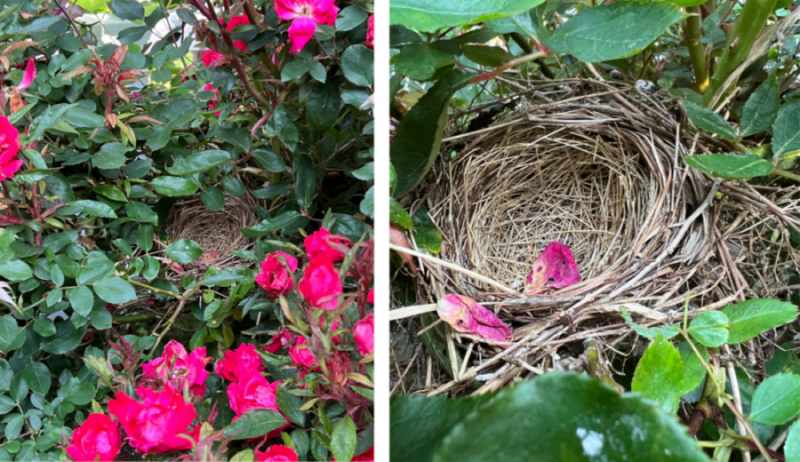
The hybrid roses along the fence don’t offer much nectar or pollen at all but provide great cover for nesting. This nest fledged four northern cardinals.
I have some camellia in the front and backyard. As evergreens they provide good year-round cover. They are also a source of nectar and pollen for early/or late season insects like this monarch butterfly that showed up last November!
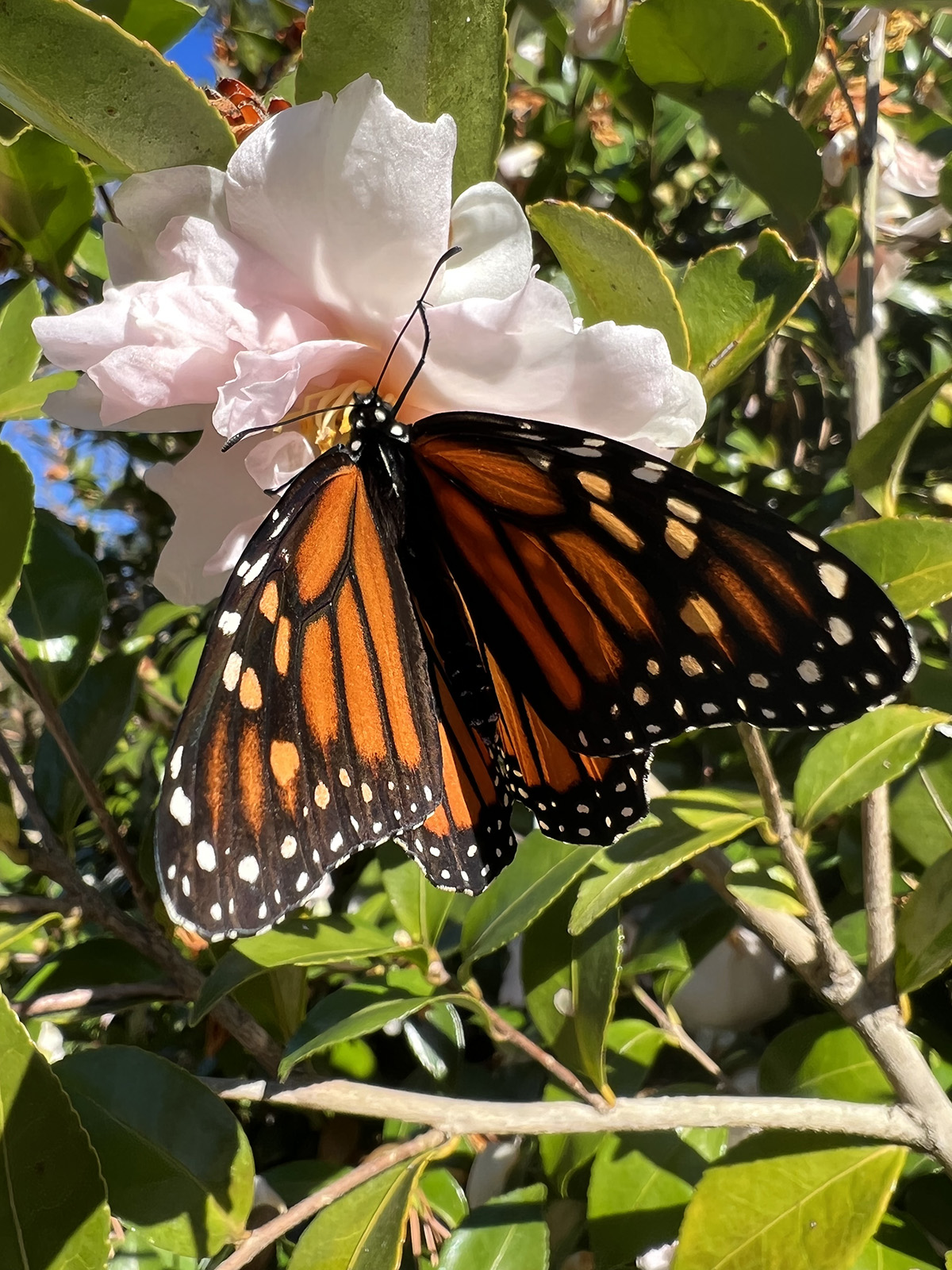
As much as I love monarchs (I mean, who doesn’t?), even more exciting for me is that for at least two years in a row I have had brown thrasher and gray catbirds nesting in these shrubs. These are species of greatest Conservation Need in Virginia and they’re breeding in my little slice of suburbia!
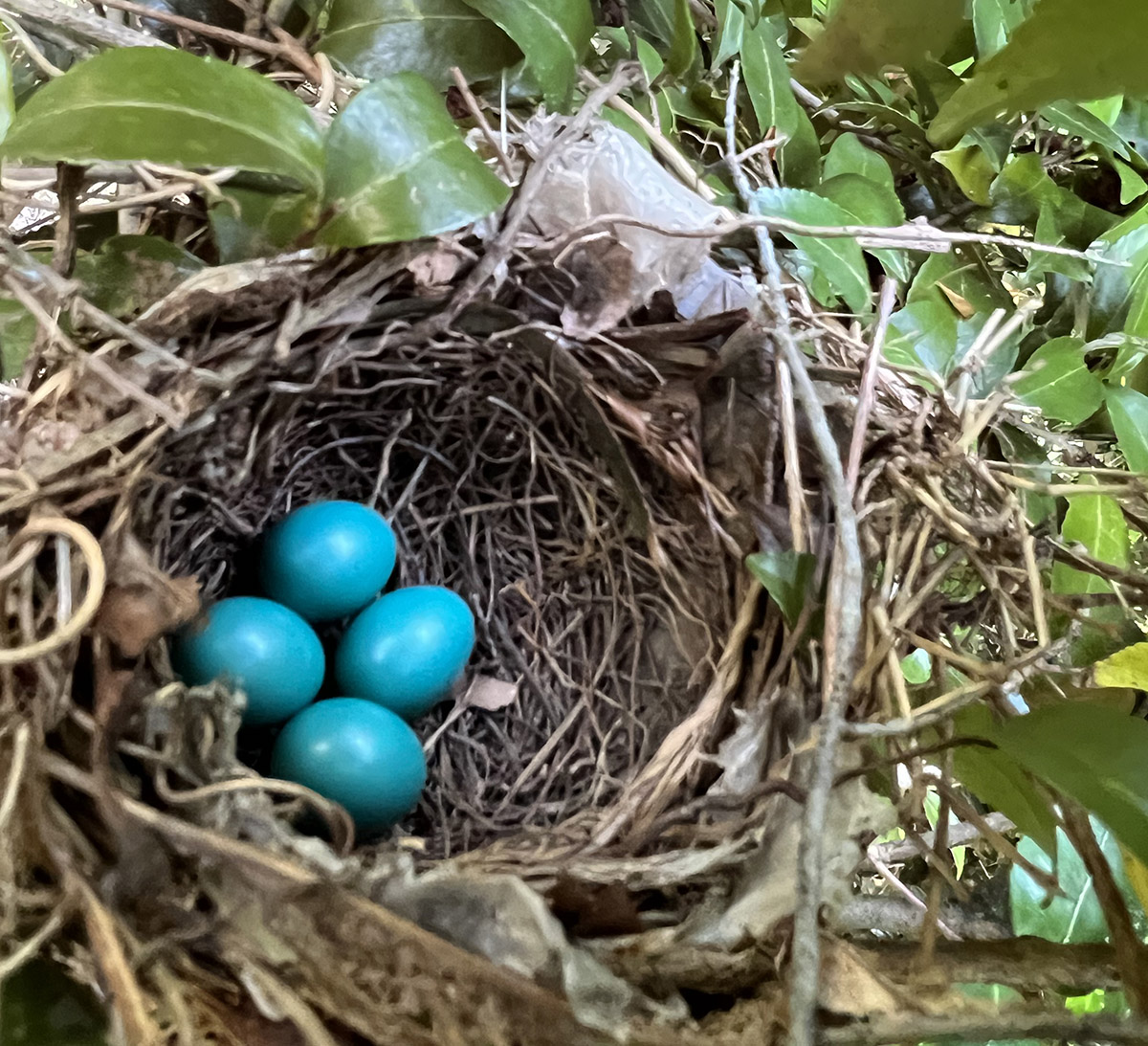
Check out the beautiful deep blue eggs of the gray catbird. The nest is well hidden, and it is rare to actually see the adults flying into it.
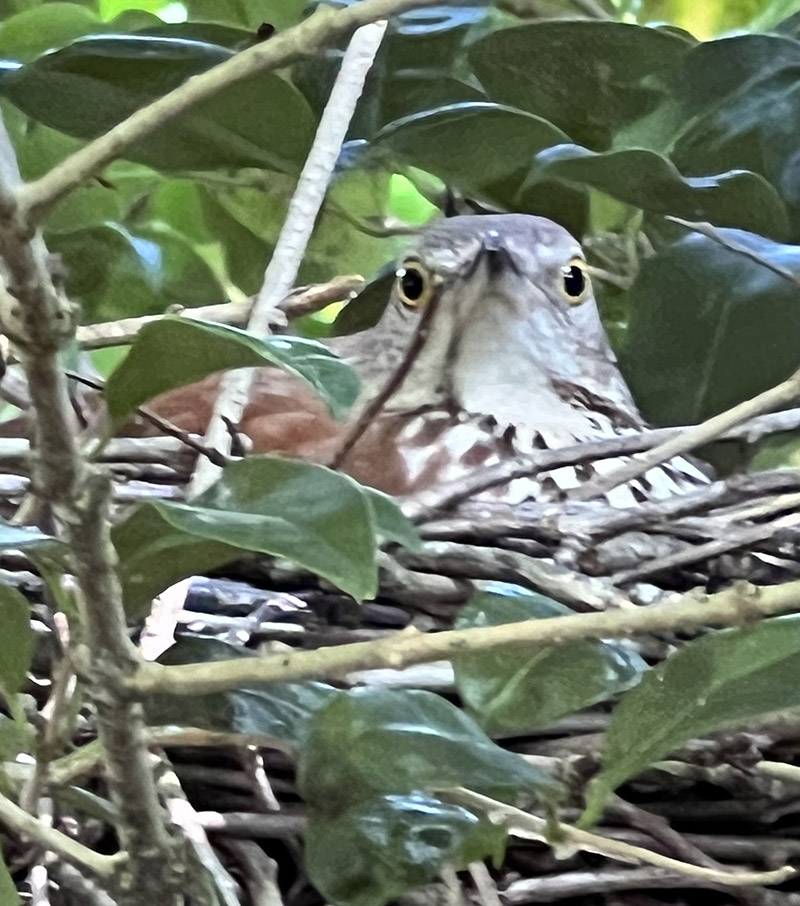
A brown thrasher incubating eggs.
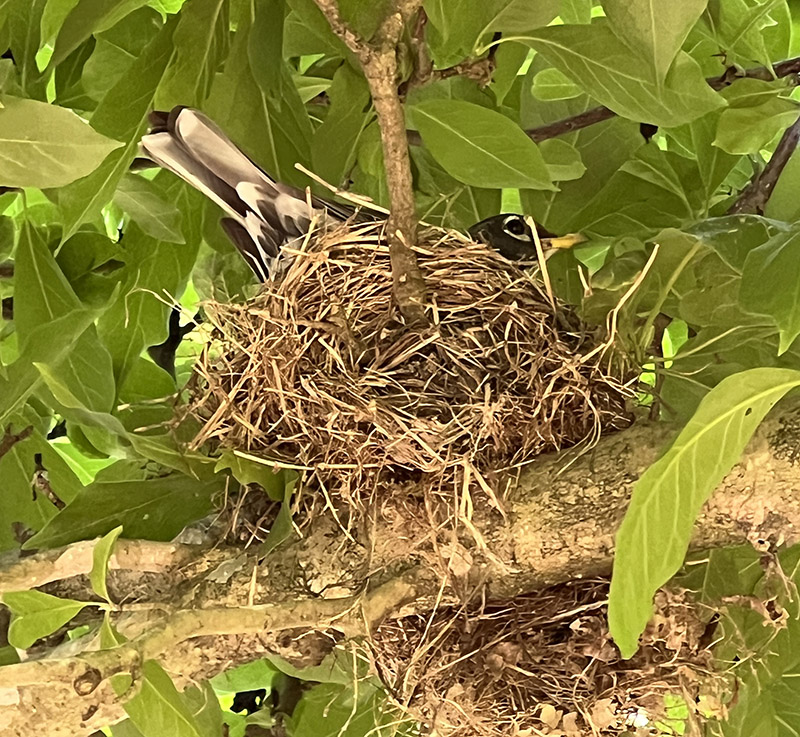
This American robin is nesting in a small saucer magnolia tree (a hybrid Asian variety) over the walkway.
Considering these non-native shrubs and trees as a productive part of a wildlife habitat may seem counter-intuitive given how much we emphasize using native plants to help create wildlife habitat. This general priority still holds true—the more native plants you establish, the greater your habitat’s ability to support biodiversity. In fact, research shows that native plant cover of at least 70 percent may be needed to support some bird species. The success that these birds had in my space is in part due to a significant (and ever increasing) amount of native plants.
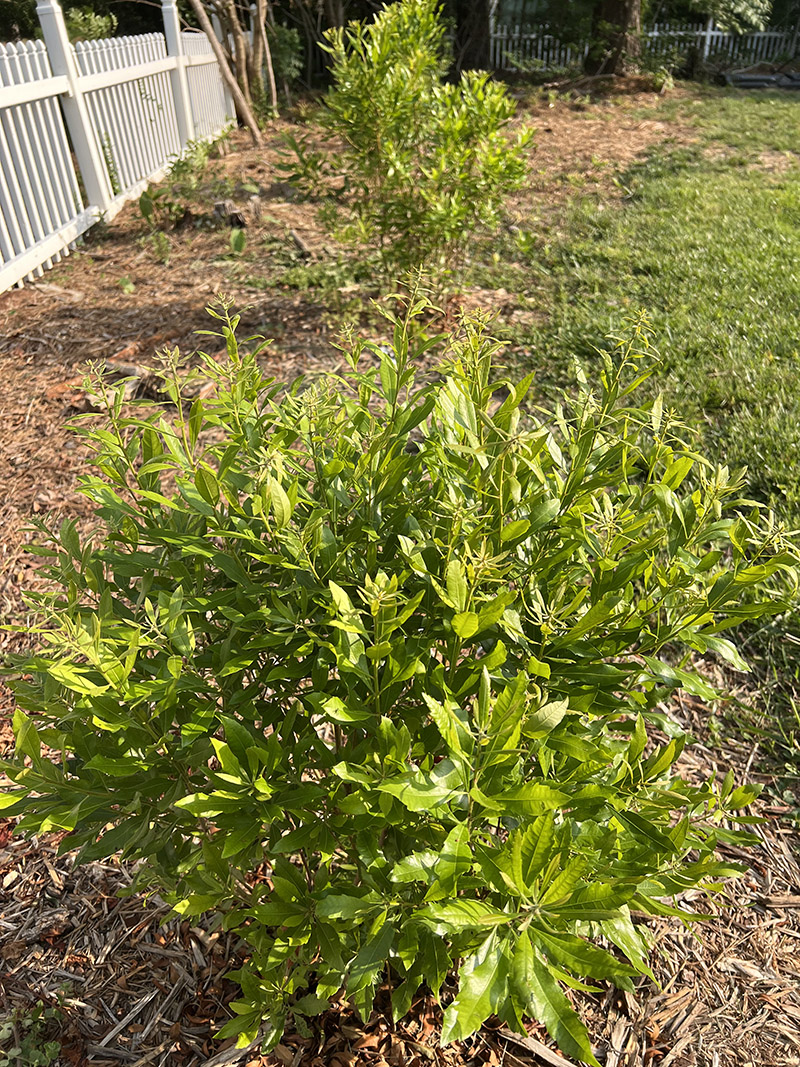
A future native evergreen hedge of native wax myrtle.
You also need to work with what you have, and it may take some time for native plantings to catch up and provide the habitat values that mature shrubs and small trees provide. In the meantime there is room for a few exotic (but NOT invasive) specimens to fill some roles in your habitat while you keep adding beautiful native species to your space.
Learn more in DWR’s Habitat at Home booklet.
Find what plants are native to your region of Virginia. And find where to purchase native plants.
Stephen Living, the DWR habitat education coordinator, is a biologist and naturalist with a lifelong love of wildlife and nature that began in the woods and streams of his childhood.


